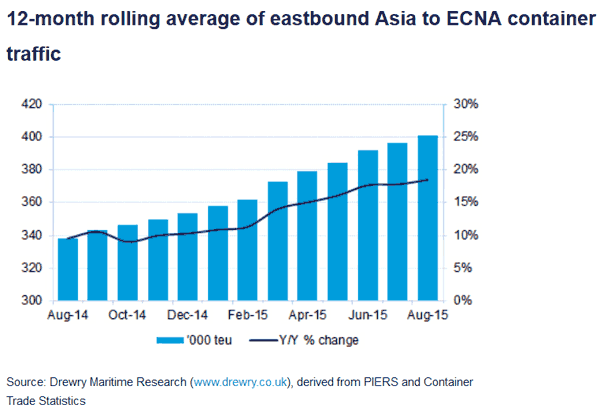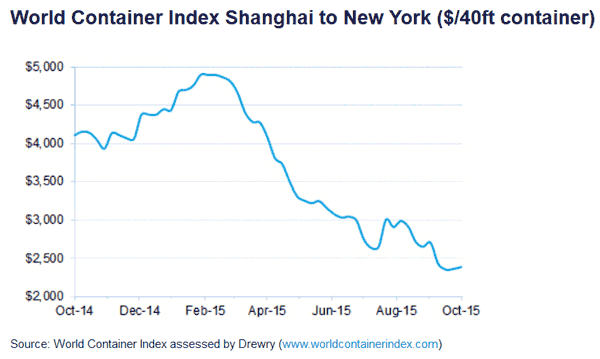From SCDigest's On-Target e-Magazine
- Oct. 27, 2015 -
Global Supply Chain News: US Container Traffic Continues to Migrate to East Coast Ports, Now Driven by Rapidly Falling Rates
Continued Decline in Rates May be More about Carrier Strategy than Pure Supply and Demand
SCDigest Editorial Staff
Ocean container volumes continue to migrate from West Coast to East Coast ports, initially due to concerns about the potential West Coast strike and overall delays in getting containers off of ships and out of terminals, but continuing even as those issues are largely behind us.
SCDigest Says: |
 |
Drewry says, the continued fall in rates to the East Coast is likely less a function of supply and demand and more strategic positioning by carriers to get importers to rethink their options |
|
What Do You Say?
|
|
|
|
The trend is indeed continuing, though at a now much slower pace, driven in part by continued decreases in rates to the East Coast and also as the result of carrier strategies.
August was the twelfth consecutive month in which double-digit growth has been seen in container traffic from Asia to East Coast ports.
During the second quarter, container traffic to the East Coasr was up 22.5% year-over-year. The rate of growth has more recently slowed, to a gain of 14.6% in July and and 12.7% in August, but that is still well above West Coast container growth, and still leaves the 12-month rolling growth average up a very strong 18.4%. according to data from a recent Drewy Container Insight blog post. (See graphic below.)
That compares with overall container volumes from Asia to North America growing at a 6.3% clip on a 12-month rolling average basis, meaning US East Coast traffic has been growing at about three times the North American average, a multiple that would be even higher if you removed East Coast container volumes from the North American total.
Yet despite the continued growth in volumes and vessel utilization rates hovering around a strong 90% in Q3, rates from Asia the US East Coast have been heading down sharply. The current spot rate for shipping a 40-foot container between Shanghai and New York is only some $2300, about $1,800 lower than it was a year ago and $1,000 lower than the average weekly rate over the last seven months.

"One has to go back several years to find a time when US East Coast rates were this low," Drewry notes. (See graphic below.)

Even more important than pure price in making carrier and tour decisions is the difference in costs for shipping from Asia to either coast.
Drewry says that in general, it was believed that rates from Asia to the US East Coast would need to fall considerably to lead more cargo to migrate from West Coast to East Coast deliveries, once the new Panama Canal is fully operational, based on the economics. In simple terms, the extra cost to ship to the East Coast has to be less than the cost to move containers via rail and truck from West Coast ports to the Midwest and East Coast destinations.
(Global Supply Chain Article Continued Below)
|